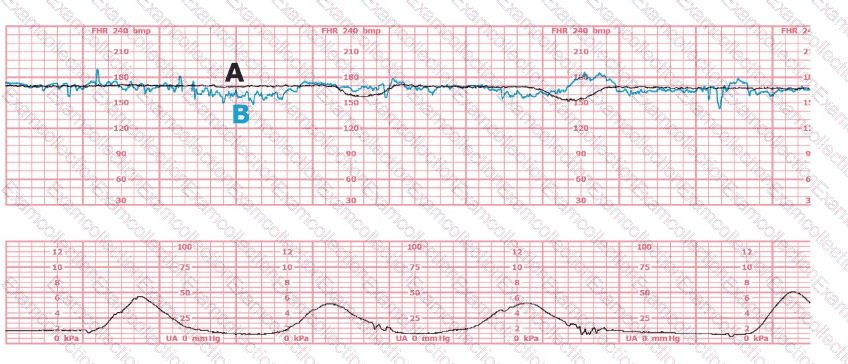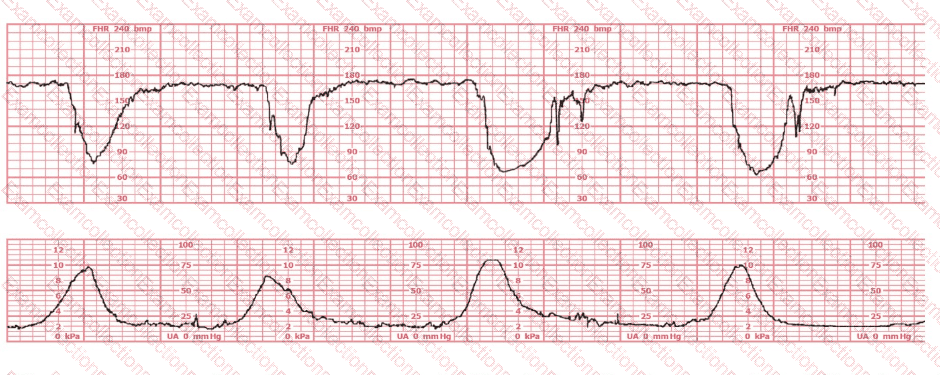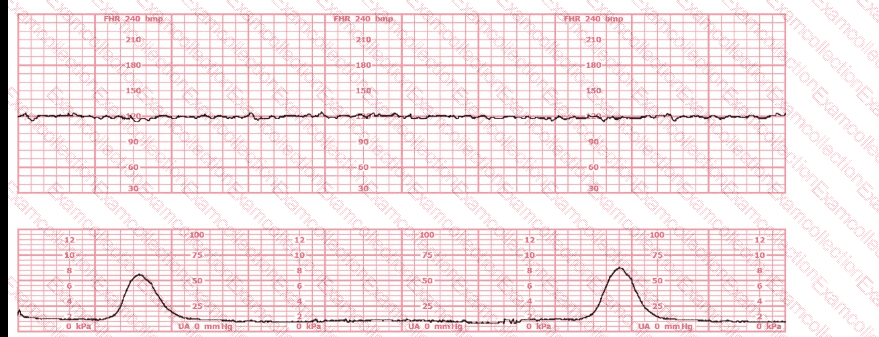NCC EFM - Certified - Electronic Fetal Monitoring
Maternal conditions of autoimmunity can result in fetal heart block due to antibodies that target:
This fetal heart rate tracing is of a woman in labor with dichorionic-diamniotic twins at 36-weeks gestation, 4 cm dilated. She is on oxygen via face mask. Based on the fetal heart rate tracing, what is the most appropriate action?

(Tracing A = black; Tracing B = blue)
After spontaneous rupture of membranes, this fetal heart rate pattern is observed. The initial intervention should be to:

The baseline fetal heart rate decreases with gestational age as a result of an increase in:
The main reason intrauterine pressure catheters are placed is to:
Amnioinfusion can cause what changes in the fetal heart rate tracing?
Maternal fever can cause fetal tachycardia because the increased maternal temperature:
This tracing reflects:

(Full question statement)
A woman at 39-weeks gestation is in labor, progressing normally. The baseline fetal heart rate has increased from 125 to 150 beats per minute over the last hour with moderate variability. What is the next step?
A 30-year-old woman (G2P0) is experiencing preterm labor at 26-weeks gestation. She is receiving magnesium sulfate for neuroprotection. Her external fetal monitoring tracing over the past 30 minutes is shown. The next step would be to:




